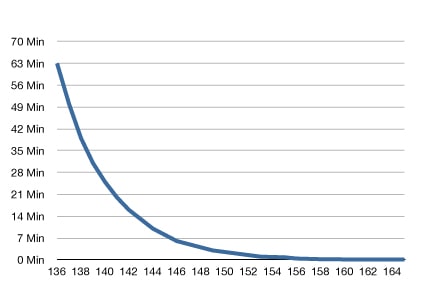-
Sous Vide Time and Temperatures
Sous Vide Time and Temps
Sous Vide Time and Temps
Sous Vide Temps
- All Sous Vide Temperatures
- Sous Vide Beef Temperatures
- Sous Vide Chicken Temperatures
- Sous Vide Duck Temperatures
- Sous Vide Fish Temperatures
- Sous Vide Vegetables Temperatures
- Sous Vide Infusions Temperatures
- Sous Vide Lamb Temperatures
- Sous Vide Pork Temperatures
- Sous Vide Shellfish Temperatures
- Sous Vide Turkey Temperatures
- Recipes Recipes Recipes Recipes
- Getting Started Guides Getting Started Guides Getting Started
- Equipment and Tools Equipment and Tools Equipment Equipment and Tools
- More Resources More Resources Resources More Resources
Sous Vide Safety: Salmonella and Bacteria
More Sous Vide Safety
•
Sous Vide
Click here to get great sous vide content via email
This information, as well as over 100 recipes, is available in our book Beginning Sous Vide which you can get at Amazon.com or as a pdf download.This post may contain affiliate links. Read more.
Written by Jason Logsdon
Cooking in plastic is a major sous vide safety concern. The other large safety concern with sous vide has been studied in much more detail and deals with the propagation of bacteria at various temperatures, especially salmonella. Salmonella only thrive in a certain range of temperatures, from about 40ºF to 135ºF, often referred to the "danger zone".
This danger zone is why we refrigerate our foods until an hour or so before we are ready to cook them. It is also why we cook our foods to specific temperatures before we eat them.
The biggest misconception about bacteria and the danger zone is that any food in the temperature range is not safe and as soon as you move above 135?F the food instantly becomes safe. The truth is that the bacteria begin to die in direct relation to the temperature they are exposed to.
The best way to visualize this is to think abot how we humans react to heat. We do fine in climates where the temperature is below 100ºF degrees. However, once it begins to climb around 110ºF or 120ºF you begin to hear about deaths in the news due to heat stroke. If the temperature were to raise to 200ºF stepping outside for more than a few seconds would kill you.
Bacteria behave in the exact same way. They begin to die at around 135ºF and 165ºF just about instantly kills them. You can see this in the chart below for 1% fat chicken. The bottom axis is the temperature the chicken is held at and the left axis is how many minutes at that temperature are required to bring the bacteria to safe levels.

This concept is why the USDA recommends that chicken is cooked to 165ºF, because at that temperature it takes only a few seconds for enough bacteria to die to achieve acceptable safety levels. In comparison, at 136ºF it takes 63.3 minutes at that temperature to achieve the same safety level, something that is virtually impossible using traditional cooking methods. Using sous vide makes it possible to heat chicken to an internal temperature of as low as 136ºF and hold it there long enough to kill the bacteria.
Please remember that this is assuming that your thermometer is exact and the sous vide water temperature is completely steady. I recommend always cooking foods at a little higher than the minimum temperature and a little longer than the minimum cooking time in order to account for any variance in temperature your equipment causes.
For more information about how long chicken, poultry, and beef need to be held at certain temperatures please refer to the USDA Guide. For more explanations of how this works you can reference the excellent guides by Douglas Baldwin or Serious Eats.
 This article is by me, Jason Logsdon. I'm an adventurous home cook and professional blogger who loves to try new things, especially when it comes to cooking. I've explored everything from sous vide and whipping siphons to pressure cookers and blow torches; created foams, gels and spheres; made barrel aged cocktails and brewed beer. I have also written 10 cookbooks on modernist cooking and sous vide and I run the AmazingFoodMadeEasy.com website.
This article is by me, Jason Logsdon. I'm an adventurous home cook and professional blogger who loves to try new things, especially when it comes to cooking. I've explored everything from sous vide and whipping siphons to pressure cookers and blow torches; created foams, gels and spheres; made barrel aged cocktails and brewed beer. I have also written 10 cookbooks on modernist cooking and sous vide and I run the AmazingFoodMadeEasy.com website.
Affiliate Disclaimer: Some links on this site might be affiliate links that if used to purchased products I might receive money. I like money but I will not endorse something I don't believe in. Please feel free to directly go to any products I link to and bypass the referral link if you feel uncomfortable with me receiving funds.













